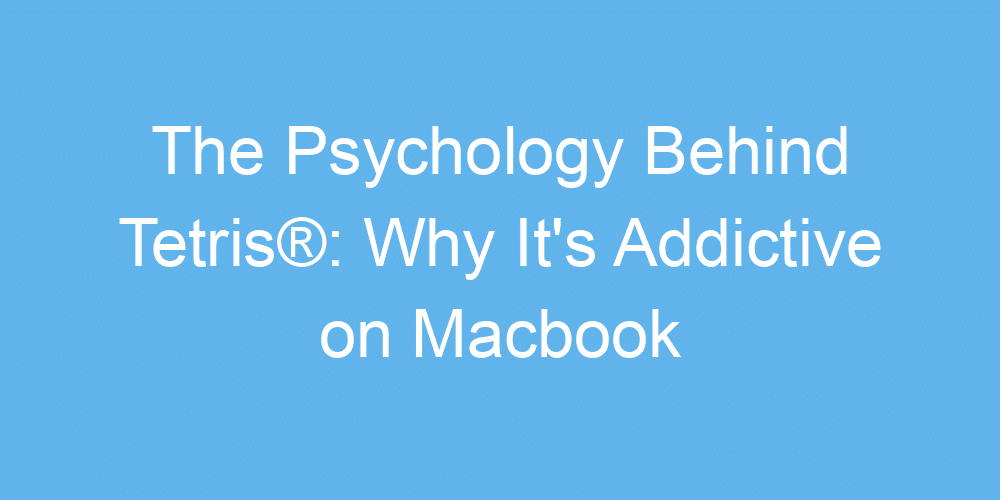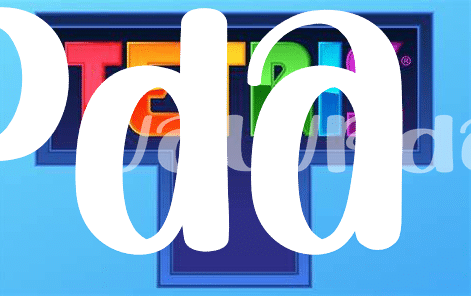🧠 Exploring the Mind: Why Tetris Grabs Us
Have you ever wondered why the simple game of Tetris is so captivating? It’s all about how it plays with our brains. When those colorful blocks start falling, our mind kicks into gear, seeing patterns and planning ahead. This tickles the part of our brain that loves order and completion. It’s like our mind is constantly being teased with a puzzle that it just needs to solve, and that’s quite satisfying.
But there’s more to it. Tetris challenges our brains just enough to keep us engaged without making us feel overwhelmed. It’s this delicate balance that makes us come back for more. Every time we play, we’re not just moving blocks; we’re exercising our brains in a fun, challenging way. This table lays out why Tetris is more than just a game—it’s a workout for our minds.
| Feature | Why It’s Addictive |
|---|---|
| Pattern Recognition | Stimulates the brain’s desire for order |
| Planning Ahead | Engages higher-level thinking and strategy |
| Balance of Challenge | Keeps players in a state of flow, not too hard or too easy |
| Mental Workout | Provides a sense of achievement and satisfaction |
🎮 the Perfect Challenge: Just Right Difficulty
When you start playing Tetris on your MacBook, it might seem simple at first – just fitting blocks together as they fall. But soon you discover it’s ingeniously challenging. The game adjusts the difficulty based on how well you’re doing, ensuring it’s never too easy or too hard. This ‘just right’ level of challenge engages your brain in a unique way. You’re always teetering on the edge of success and failure, which makes you determined to improve. It’s this delicate balance that keeps you coming back for ‘just one more game.’ Tetris doesn’t just throw random blocks at you; it pushes you to think, plan, and react quickly. This combination of thinking and doing provides a satisfying sense of accomplishment, much like solving a complex puzzle only to realize there’s an even bigger one waiting. It’s the kind of fun that you never get tired of, whether you’re playing for a few minutes or a few hours. For more fascinating insights into maximizing your enjoyment on iPhone apps and games, make sure to explore https://iosbestapps.com/maximizing-your-bloons-td-6-experience-with-iphone-shortcuts.
🔁 Endless Play: the Loop That Hooks
Imagine you’re playing a game where the challenges never end, where each level smoothly transitions into the next, making it hard to find a stopping point. This is what makes Tetris so captivating. The game cleverly uses a combination of simple yet progressively challenging puzzles that keep you coming back for “just one more try.” With each row you clear, the satisfaction of tidying up and organizing brings a sense of accomplishment. But, as you clear these rows, the game quietly speeds up, subtly raising the stakes. It’s this seamless loop of challenge and reward that ensnares players, creating a timeless cycle of gameplay that’s hard to break away from. The genius of it all? You’re always chasing that high score, trying to outdo yourself, which keeps the game endlessly entertaining and remarkably addictive. 🕹✨
💡 Aha! Moments: the Joy of Solving Puzzles
There’s a unique satisfaction that comes from fitting pieces together perfectly, whether in a physical puzzle or a digital game like Tetris. This feeling, often described as an “Aha!” moment, taps into the human brain’s natural love for problem-solving. Each time a line is completed and disappears, not only is there a visual reward, but our brains also give us a little pat on the back in the form of dopamine, a feel-good neurotransmitter. This biochemical reward system encourages players to keep going, chasing the high of the next perfectly placed block.
For those looking for more puzzle adventures to keep their brains engaged, consider checking out the iphone subway app. It’s packed with games that are not only fun but also visually stimulating and challenging, perfectly catering to the puzzle-solver in all of us. The joy of solving puzzles in Tetris mirrors the larger appeal of overcoming challenges, making it more than just a game—it’s a continuously rewarding mental exercise that keeps us coming back for more.
🕒 Time Flies: Losing Yourself in the Game
When playing Tetris on your MacBook, have you ever started and then suddenly noticed hours have passed? This phenomenon isn’t just you losing track of time; it’s a testament to the game’s immersive experience. The simple yet engaging nature of fitting those blocks together can make the outside world fade away. This is because the game requires a focus that’s deep, but not too demanding, allowing players to enter a state often referred to as “flow.” In this state, your mind isn’t wandering; it’s completely captured by the task at hand, making time seem to speed up.
The secret sauce of Tetris lies in its ability to keep you in the zone. Whether it’s flipping a ‘T’ block to complete four lines at once or swiftly navigating an ‘L’ block into a tight spot, each successful move brings a sense of accomplishment. These mini victories keep you engaged, pushing you to play “just one more game.” Research suggests that when we are fully absorbed in an activity, our perception of time alters. Tetris exemplifies this beautifully, as players are consistently challenged, rewarded, and enticed to improve, leading them into a cycle of focused play where minutes can feel like moments.
| State of Mind | Activity | Perception of Time | Game Example |
|—————|———-|——————–|————–|
| Flow | Playing Tetris | Time speeds up | Completing lines |
| Non-flow | Distracted gaming | Time drags | Struggling with a level |
🔄 Tetris Effect: Dreaming in Blocks
Have you ever found yourself seeing Tetris blocks long after you’ve stopped playing? It’s not just you! Many players report dreaming about the shapes fitting together perfectly when they close their eyes at night. This phenomenon, called the Tetris Effect, showcases the game’s powerful impact on our brains. It happens because playing it a lot trains our minds to organize and fit things together, even when we’re not actively playing. Just like when you learn a new word and suddenly start noticing it everywhere, playing Tetris can change the way you see the world around you.
The reason why this is so fascinating is that it shows how engaging and immersive Tetris really is. It doesn’t just stay confined within the game; it leaps out and influences our perception in real life! If you’re in search of a different kind of engaging play, check out vision pro baby games app. Just like how Tetris trains our brains to see patterns in blocks, other games challenge us in unique ways, keeping our minds active and entertained. So, next time you dream in blocks, remember it’s a testament to the captivating power of Tetris, drawing you back for just one more game.





